Finding beauty in the details on the Olympic Peninsula
Chef Melissa King teams up with National Geographic Photographer and Explorer Anand Varma to uncover hidden wonders and stunning biodiversity along Washington’s Olympic Coast.
Nature is filled with breathtaking phenomena: A single glance at snow-capped mountains, lush forests, or the clear blue ocean is enough to make anyone appreciate nature’s creative power. But nature’s wonder doesn’t always exist in the most visible of ways. Oftentimes, this beauty is hidden in the details—in the smallest elements of an ecosystem that only reveal themselves once you know where and how to look for them.
In the five-part content series Tasting Wild, acclaimed chef (winner of Top Chef: Los Angeles All-Stars Season 17) Melissa King teams up with National Geographic photographers and scientists to explore some of the most fascinating and unspoiled areas in the United States. Traveling by way of the first-ever MAZDA CX-50, King dives deeper into nature in search of connection, inspiration—and ingredients.
As a chef, King tells stories through her food. Drawing inspiration from her Asian-American heritage and life in San Francisco, she often combines modern California cuisine with Asian flavors. She is on this expedition with National Geographic to see nature from different perspectives, feel its transformative power, and ultimately create dishes that reflect her experience in each place.
For this part of her journey, King drives the CX-50 to the North Olympic Peninsula in Washington. Located between the Pacific Ocean and Puget Sound, the area is home to an incredibly diverse aquatic ecosystem.

Here, King teams up with National Geographic Photographer and Explorer Anand Varma, a Berkeley, CA resident who specializes in macro photography. His close-up images reveal the invisible details all around us and share the stories behind the science of everything from hummingbird biomechanics to honeybee lifecycles.
They first head to a local bee farm in Port Angeles called Olympic Wilderness Apiary to learn more about the farm’s unique honey and observe the bees through Varma’s macro lens.
The owners of the farm, Dan and Judy Harvey, have been breeding queen bees and producing honey in the area for over 25 years. Their apiary is surrounded by fireweed—a native perennial plant that is often the first growth after a forest fire—and the bees collect nectar and pollen almost exclusively from its magenta flowers.
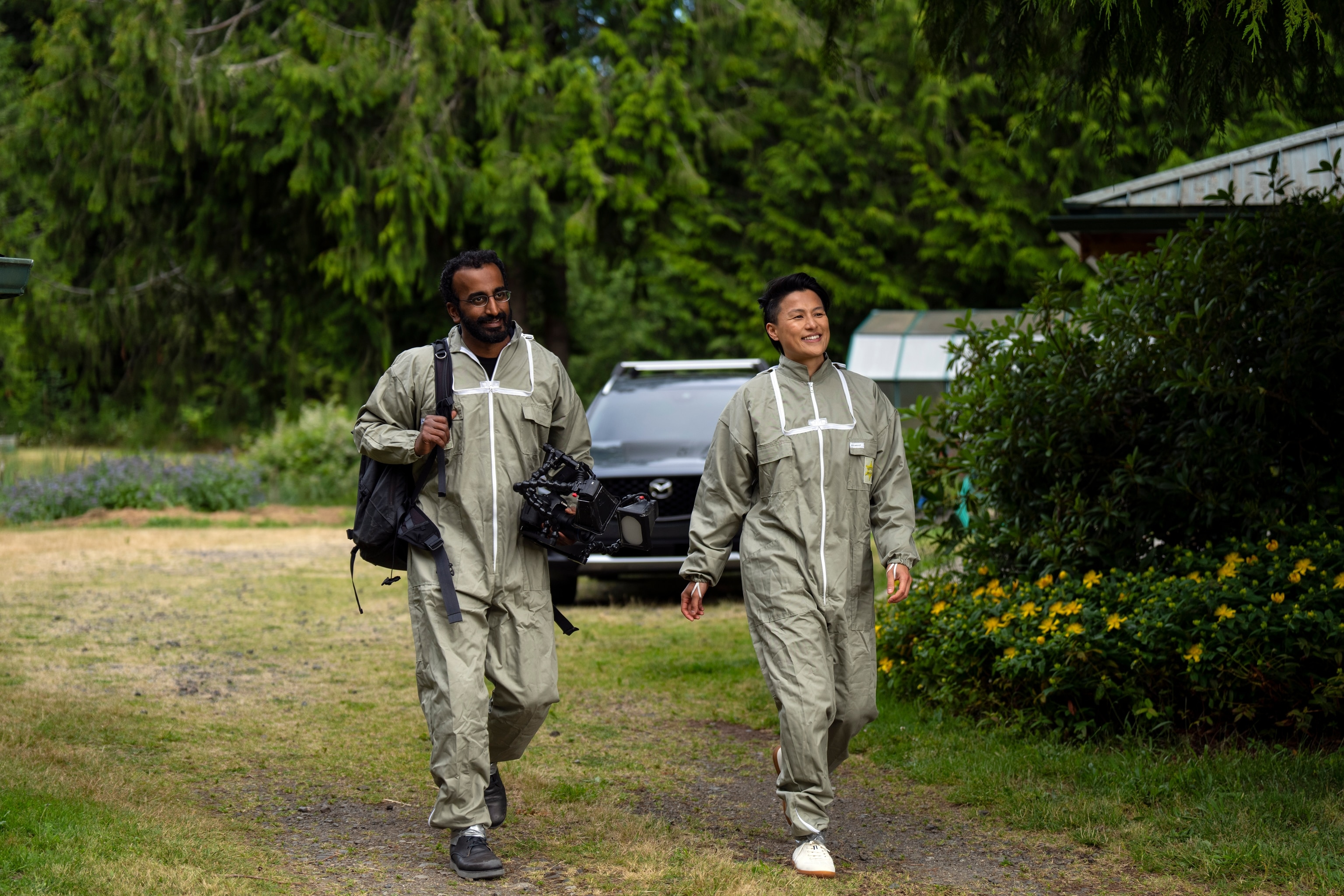
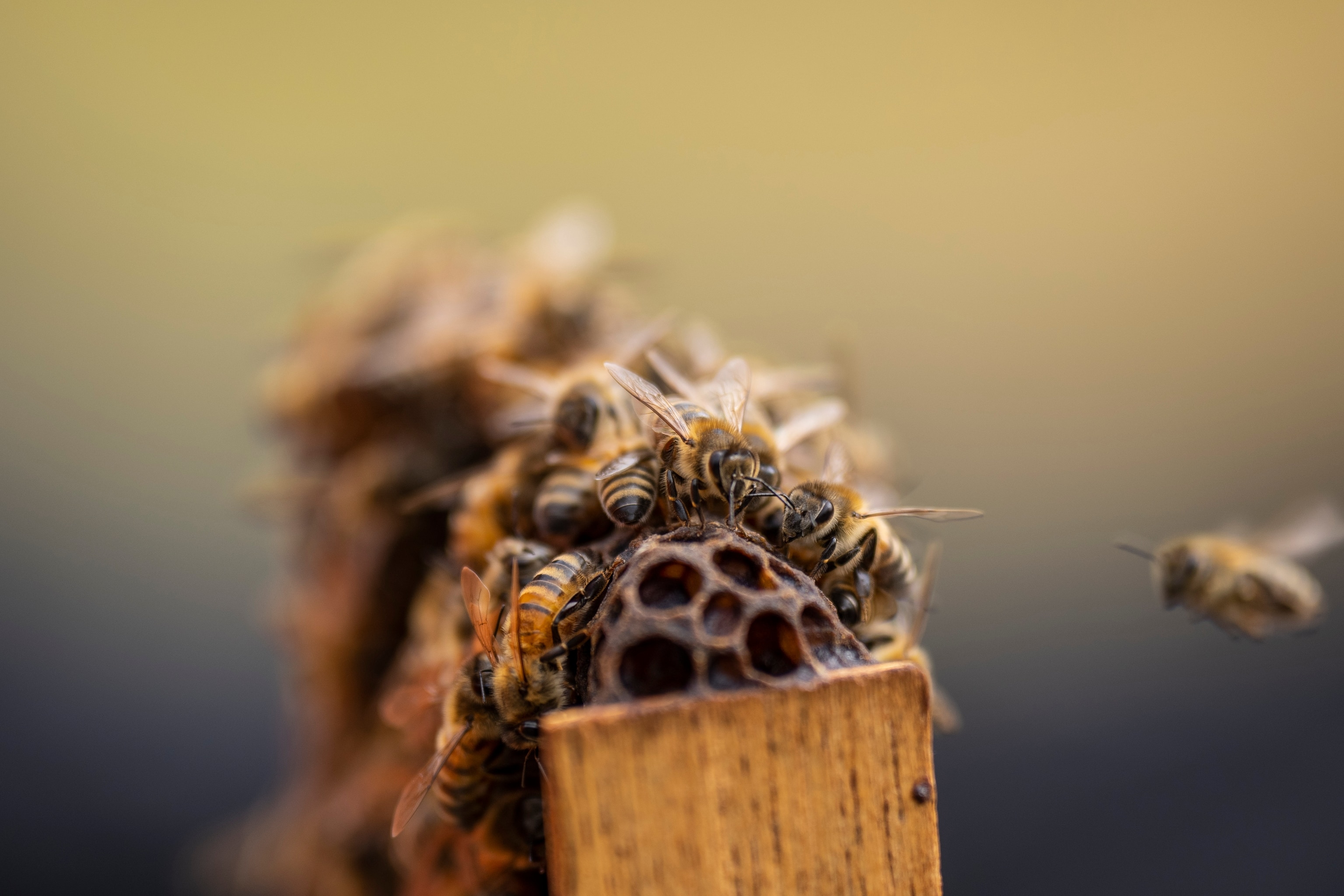
King and Varma gear up in bee suits for protection and venture toward the hive boxes. They open one and pull out a frame of honeycomb, covered in bees. Varma takes a photo to explore the details further. “It’s so surprising, when you get up close to a honeybee, especially its face. You realize they’re covered in fur… You learn to appreciate them in a whole new way,” he says.
They return the bees to the hive and walk back up the path to taste the honey. For King, honey is an exciting ingredient to work with because of the intricacies of its flavor. “You can really use it from savory dishes to sweet dishes. It’s almost like wine. There are so many different nuances that you can get from a single honey,” she says.
King recognizes the uniqueness of the Harveys’ honey from her first taste. Made with pollen and nectar from a single source, the fireweed honey is light and clean with a delicate profile. King can’t wait to use the beautiful product in her dish.
King and Varma jump back in the CX-50 and head to a stretch of rocky sand that extends from the edge of the coastal forest to the waters of the Strait of San Juan de Fuca. As they drive, King asks Varma about his passion for macro photography and how it all began.
Varma says his love of uncovering hidden things started as early as he can remember. As a child growing up in Atlanta, GA, he spent hours exploring the creek in his backyard, turning over rocks and logs to see what bugs and reptiles were underneath.
I fell in love with exploring the natural world and found out that photography could be this way of sharing my discoveries with other people.Anand Varma, National Geographic Photographer and Explorer
They park by the beach, and Varma points out a tall stack of rocks crowned by trees located just off the coast. Low tide renders this remarkable spot accessible by foot, and reveals hundreds of tidepools now surrounding the island. They pull on waders and boots as King thinks ahead to what they might discover here. Seafood is one of her favorite ingredients to work with, and she hopes to find some mussels, barnacles, or clams in these waters.
On the beach, Varma leads King over to a rock covered in kelp. He pulls back the vines to expose hundreds of mussels underneath. King is thrilled, and Varma reminds her to look even closer. “You see a rock covered in mussels, and then you get down to one of those mussels and it’s covered in limpets. That limpet has its own algae, and there’s just these levels upon levels of detail, life, and biodiversity. And that’s what makes tidepools so special,” he says.
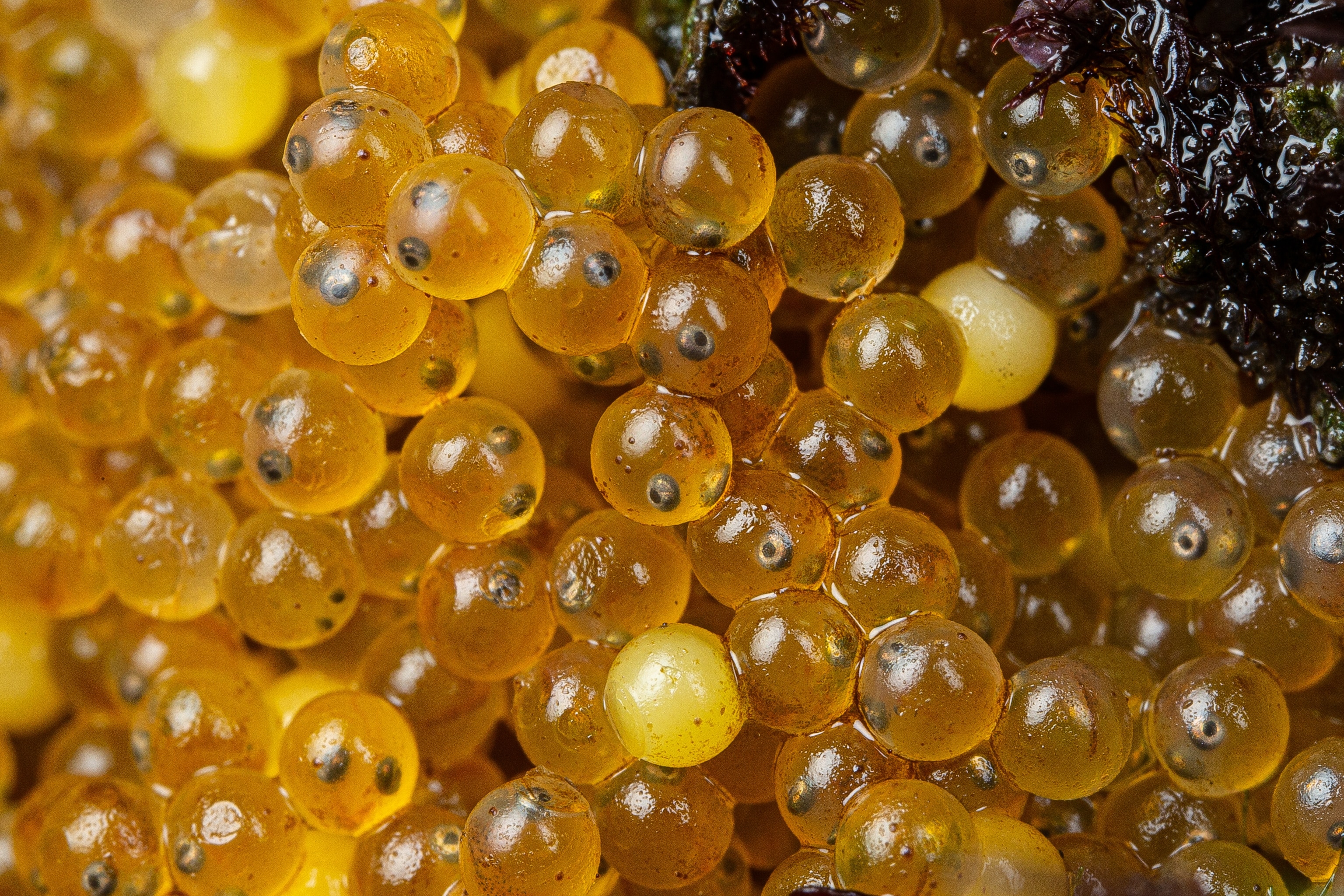
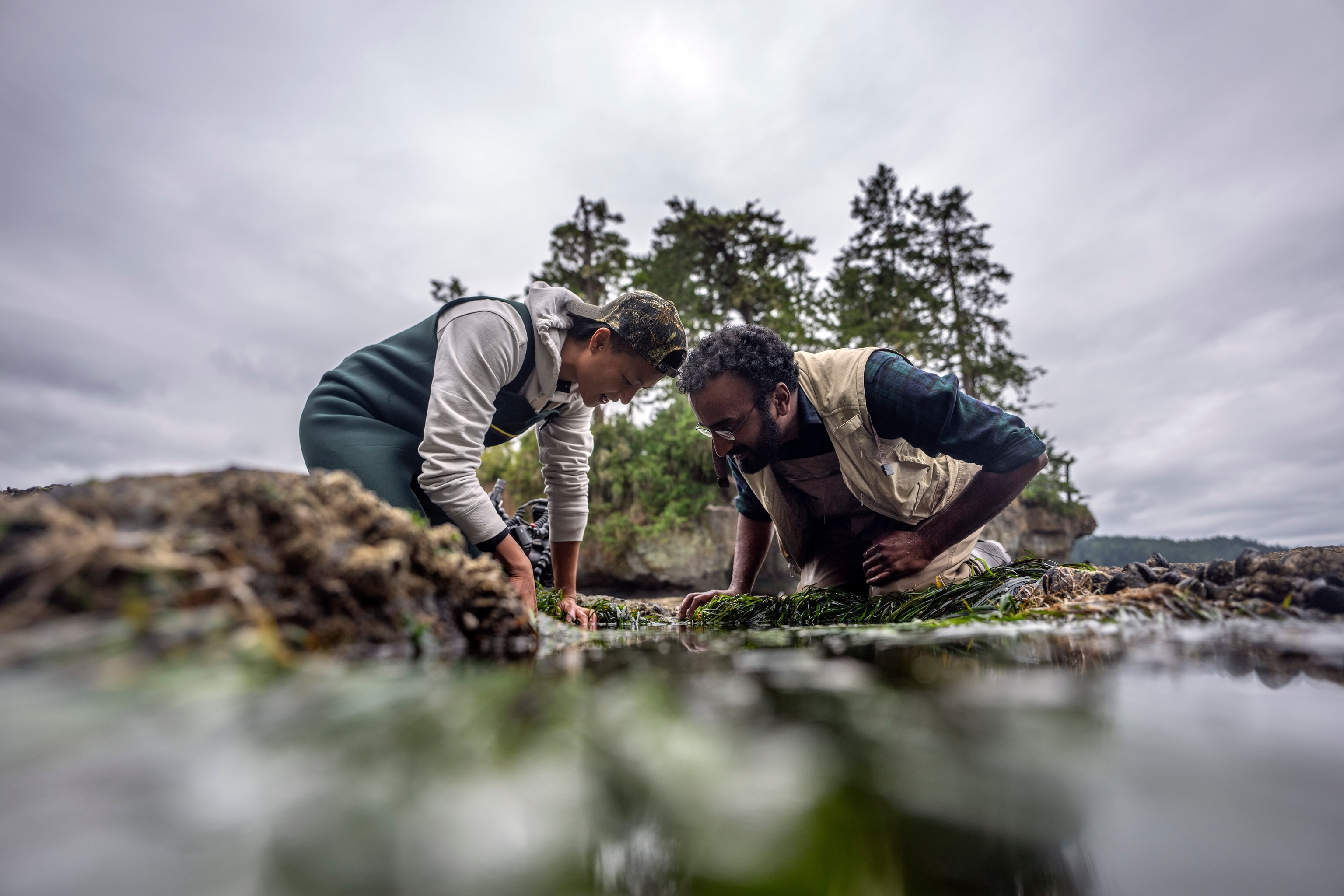
King and Varma walk along the shore toward a cave and turn rocks to see what they can uncover. They find tiny sea stars and something Varma has never seen before: a mass of octopus eggs. Using his macro lens, Varma takes a photo of the eggs, revealing tiny octopus eyes in each one.
The tide is coming in, so King and Varma hike back to the beach to rake for clams in the shallow water. Tiny air bubbles rise to the surface revealing life underneath, and King and Varma are able to harvest little neck clams and cockles, which are similar to little necks but have a less briny flavor. They’re great for steaming, and King is inspired to use them in a Thai coconut soup called tom kha gai.
After tide pooling, the duo hikes in from the coast to pick sea beans, which are typically found in dense clusters along coastal waters. They have a salty, almost grassy taste with a crisp texture, and King thinks they’ll add the perfect final touch to her dish.
With mussels, clams, and sea beans in hand, King and Varma head back to the CX-50 and turn off-road to a wide-open spot on the beach, where King will prepare her dish overlooking the water. She builds a fire and sets up a makeshift prep station on the sand while Varma sets up a field studio in the cargo area of the CX-50. He wants to get a few close-ups of the ingredients they’ve gathered.

He puts a mussel in a glass container filled with water and zooms in with his macro lens. Looking at the image on the back of his camera, they see the mussel’s gills peeking out from the shell. These are the moments Varma loves most. “One of the most exciting parts about photography is getting to see this pattern or detail that you didn’t notice at first glance. You zoom in with a macro lens and you take a picture, and it’s that moment where you see something on the back of the camera that you never noticed before,” he says.
It’s time to cook so King and Varma make their way back down to the beach. For their appetizer, King prepares fire-roasted oysters. She shucks a half-dozen Pacific oysters, dots each with a mixture of butter, Sichuan chili oil, and fireweed honey from the Harvey’s apiary, then places them directly on the hot coals. In less than a minute, the oysters are golden brown, sizzling, and ready to eat. Next, King makes a tom kha inspired by the tidepools. She arranges the mussels and clams into a large pot directly on the fire. She breaks up a stalk of lemongrass with her hands and adds it to the pot along with sake, seafood stock, coconut milk, and Thai chilis. King watches the tom kha begin to simmer and pulls it off the fire the second the mussels and clams start to open.
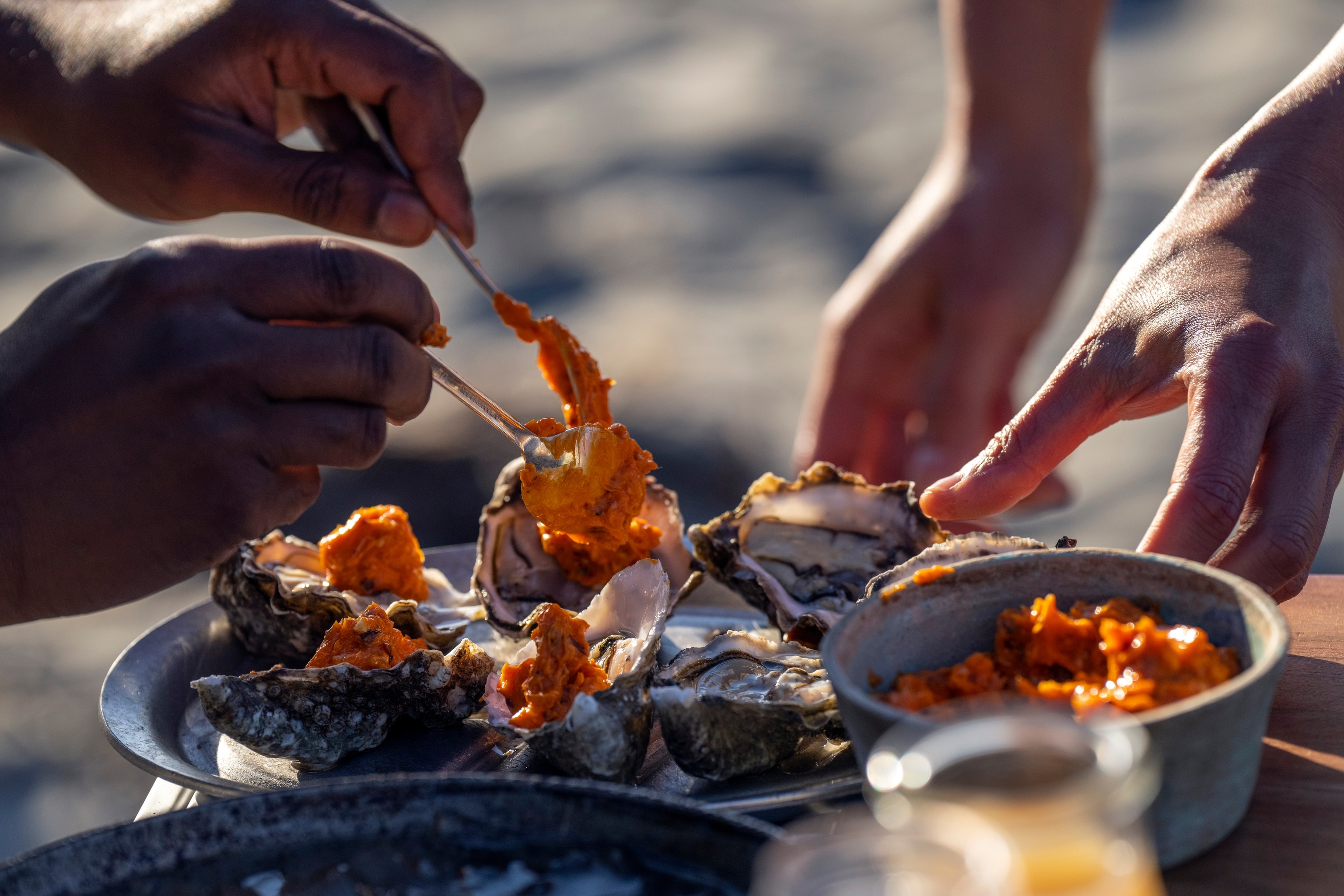
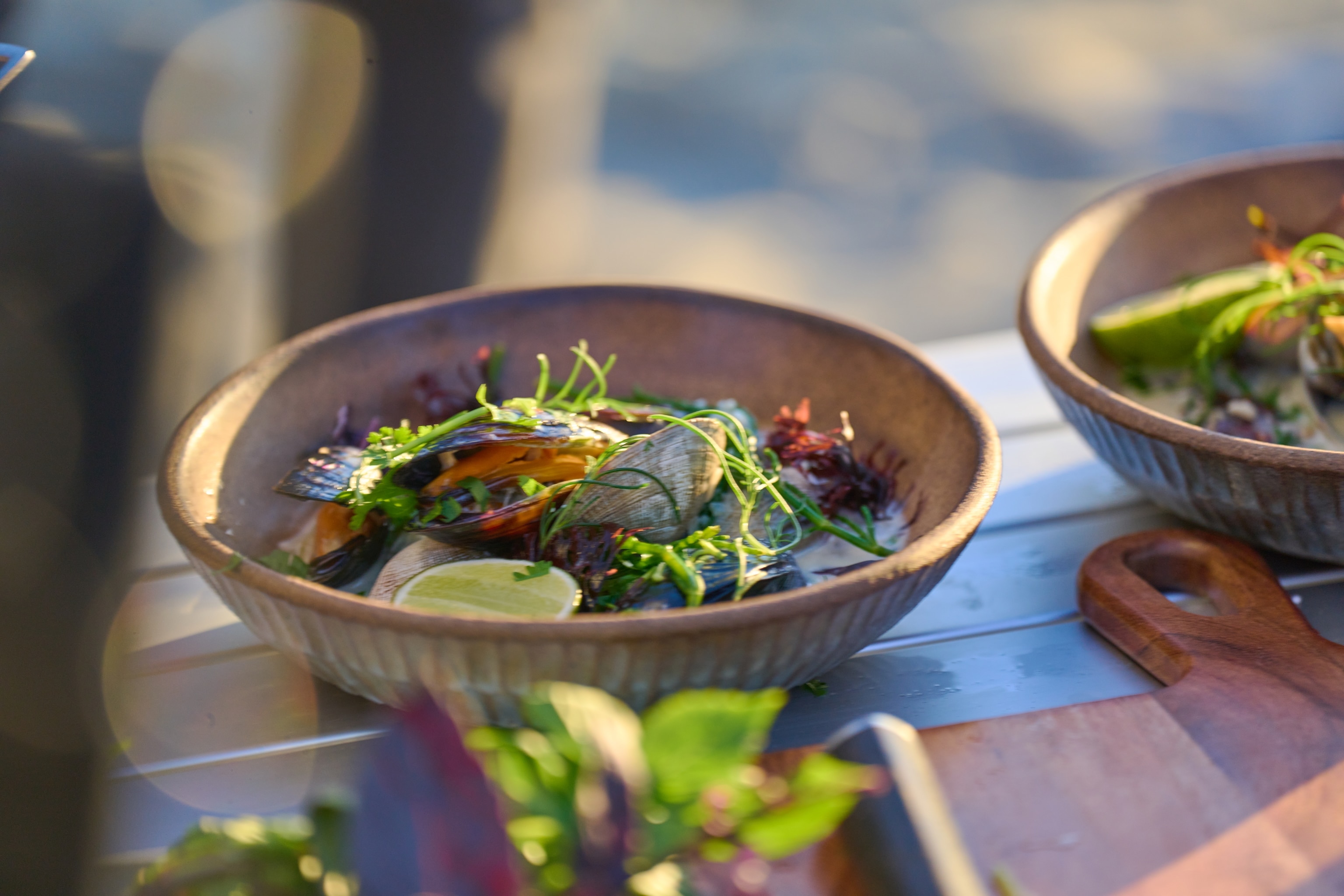

King ladles the steaming coconut soup into two bowls, and thoughtfully tops each with fresh basil, cilantro, and the sea beans they foraged. Her presentation is reminiscent of the tidepools, with incredible ingredients hidden just out of plain sight. She finishes the dish with a squeeze of lime and hands a bowl to Varma.
As they eat, King thanks Varma for taking her on this adventure to reveal the incredible diversity of life forms that exists within this ecosystem.
I came to the Olympic Peninsula looking for sweeping views and calming waves. What I discovered was beauty in all the little things—and how important it is to sometimes just stop, take a breath, and marvel at the amazing details of the world around us.Melissa King, Chef
Watch the full episode and the entire Tasting Wild series on Hulu and National Geographic YouTube.